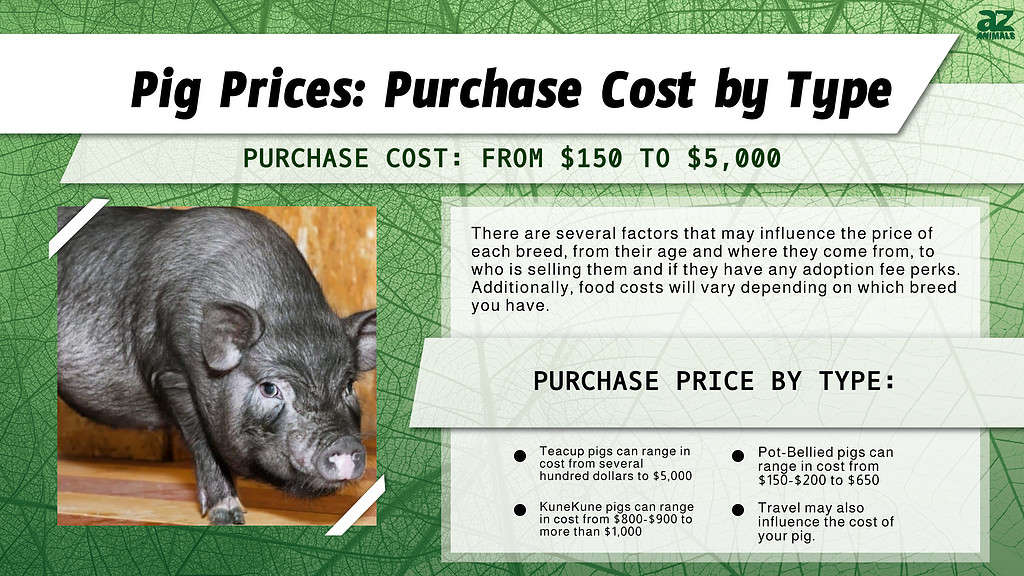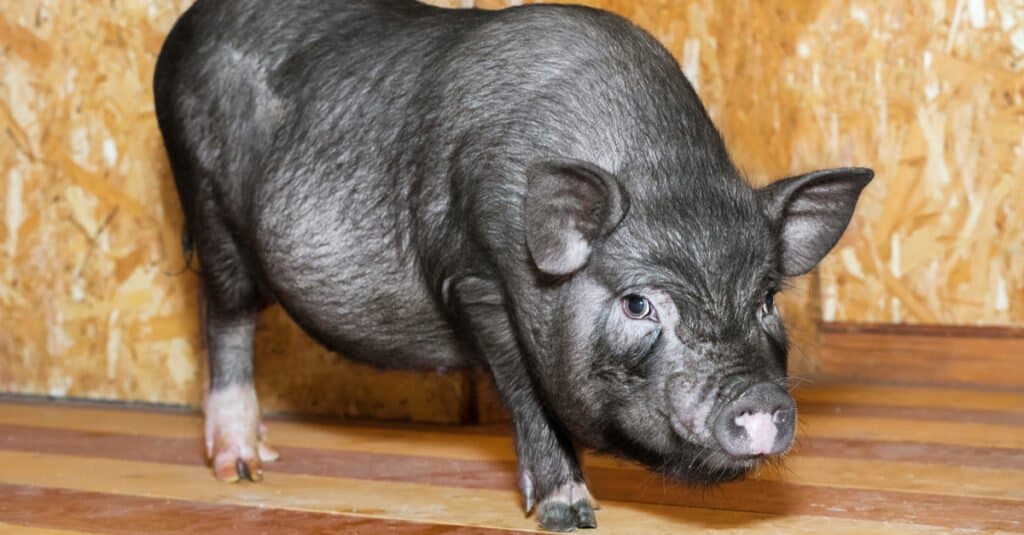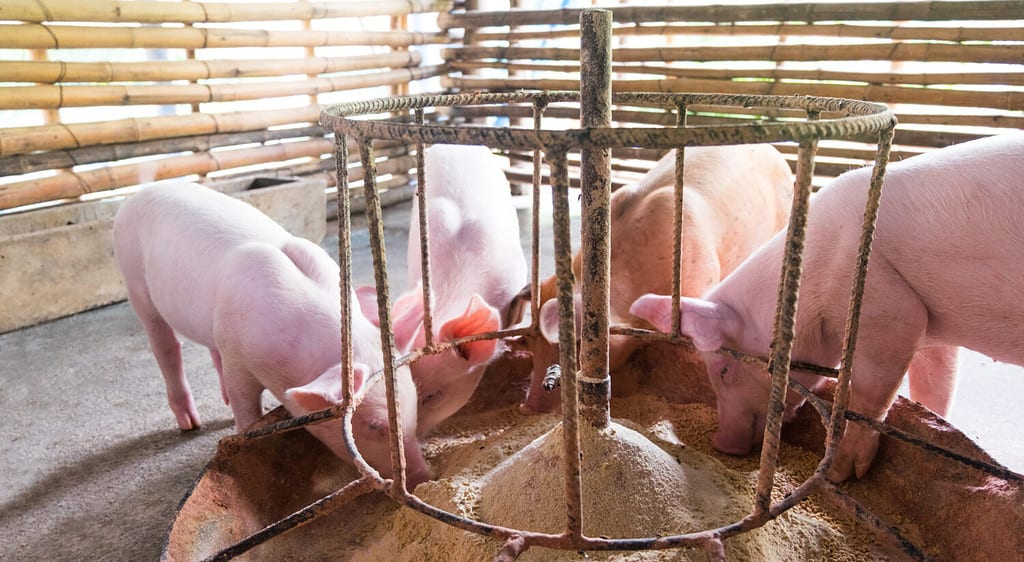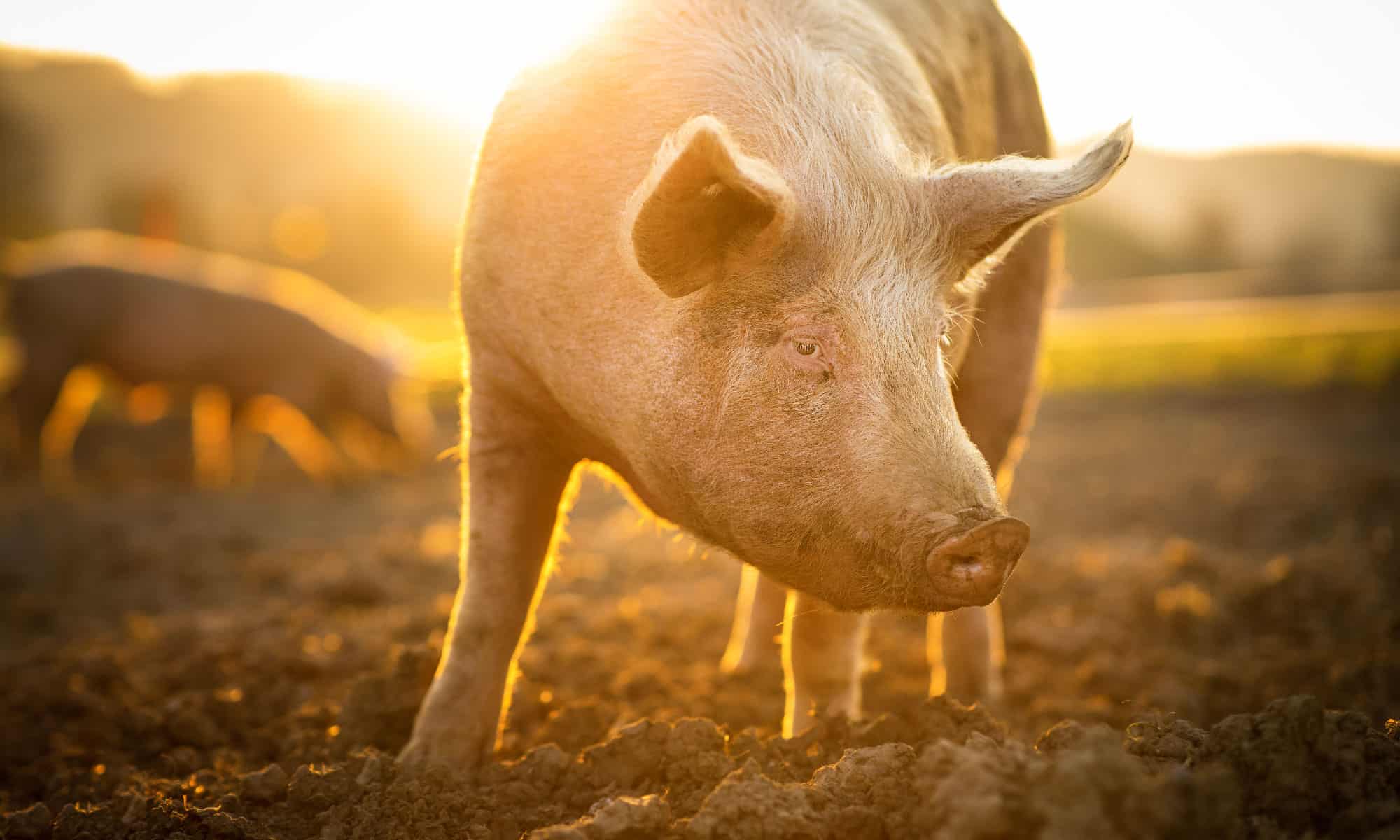The pig, which is known scientifically as Sus domesticus continues to grow in popularity. An increasing number of people choose to adopt these cute, intelligent, sensitive, and playful animals as pets. However, before making this choice, would-be owners must know about pig prices in 2024: purchase cost by type, feeding costs, and more.

The three major types of pigs adopted as pets include the teacup, the pot-bellied, and the kunekune.

A pot-bellied pig stands and poses for a photo.
©Anton Watman/Shutterstock.com
Purchase Price by Type
Teacup
Teacup pigs receive their name because of their small birth size. However, when mature, their weight averages between 50 and 100 pounds.
The average purchase price typically runs several hundred dollars. That said, purchase costs could run as high as $5,000.
Pot-Bellied
Of the three main pig pet breeds, the pot-bellied version is the least pricey. Usually, these animals sell for an average cost of $150-$200. However, purchase prices could run as high as $650.
KuneKune
On average, kunekune clock-in is the most expensive pig adopted as a pet. Typically, future owners should expect to shell out at least $800-$900. In certain cases, however, they cost more than $1,000.
Additional Factors Influencing Purchase Price
Other important issues influencing pig purchase prices in 2024 include:
- Age. Normally, younger pigs sell for higher purchase costs than older ones.
- Lineage. Pigs born to prize-winning parents often fetch higher returns.
- Adoption fee perks. In certain instances, the adoption price includes extras like needed vaccinations, spaying or neutering, and physical examinations by reputable veterinary professionals.
- The seller. Typically, pigs sold by smaller farmers cost less than those offered by larger breeders with name recognition.
- Travel. If transporting the pig from seller to owner requires significant travel, expect a higher overall purchase price.
Feeding Costs
Teacup
Teacup pig owners should budget several hundred dollars per year to cover food costs. The bulk of their diet comes from feed. However, produce also proves beneficial to their dietary needs.
Pot-Bellied
Typically, pot-belled pigs consume roughly one pound of feed each day. At that rate, monthly expenses average out to anywhere from $40-$50 per month. Like the teacup variety, a diet rich in fruits and vegetables helps the animals receive important vitamins and minerals.
KuneKune
On average, a kunekune pig’s monthly food bill is several hundred dollars. Like other pigs commonly adopted as pets, a large percentage of their food comes from feed and produce. However, they can also consume certain human foods provided it is in moderation and approved by a veterinarian.
Important Considerations
One must recognize that factors like age and health influence a pig’s dietary needs. Therefore, feeding costs often vary as the animals age or experience medical issues.
Medical Expenses
Calculating the average medical costs associated with pig ownership often proves difficult. Every animal is different and experiences changing needs with age and as health problems arise. That said, veterinary care for pigs is often more costly than for dogs and cats. Not all veterinarians specialize in pig care, which means these professionals are highly specialized. Moreover, pig specialists are not readily available. This means pig owners must often travel long distances to obtain the necessary care.

Four pigs enjoying their morning feed.
©chadin0/Shutterstock.com
Miscellaneous Costs
Other expenses impacting pig purchase prices in 2024 include:
Fencing
Pigs do spend time inside. However, they require space to wander and often must spend several hours outdoors each day. Therefore, responsible owners typically provide fencing to keep them safe and contained. Fencing may cost anywhere from several hundred to more than a few thousand dollars. This will depend on the size of the property, the materials used to construct the barrier, in addition to the pig’s size and exercise needs.
Certification Charges
Many states mandate that new pig owners obtain certain certifications ensuring that the animal is healthy and was purchased legally. Such items often include:
- State-specific blood tests
- A United States Department of Agriculture (USDA) certificate
- An ear tag or branding tattoo
- An entry permit
These expenses could add up to anywhere from $300 to almost $1,000.
Supplies
Pig owners must invest in certain supplies like:
Crates
Pigs often grow large and often require crates for transportation purposes. Usually, the items are equipped with enabling owners to more easily load the pig in and out of vehicles. Crates usually cost at least several hundred dollars. However, certain options exceed $500.
Entertainment Items
Experienced pig owners highly recommend investing in entertainment items like sand piles and pig pools.
Total supply costs could run close to or possibly exceed $1,000.
Pet Sitting
Pet sitting costs usually depend on influencing factors such as:
- The sitter’s experience level
- The amount of time the sitter will be expected to perform specific duties
- The responsibilities the sitter is expected to perform
- The location where the sitter will be performing the watcher duties
In many cases, pig sitters cost more than dog or cat watchers. Typically, pig-sitting is more physically demanding and requires the sitter to possess knowledge of important skills like feeding.
Thank you for reading! Have some feedback for us? Contact the AZ Animals editorial team.








